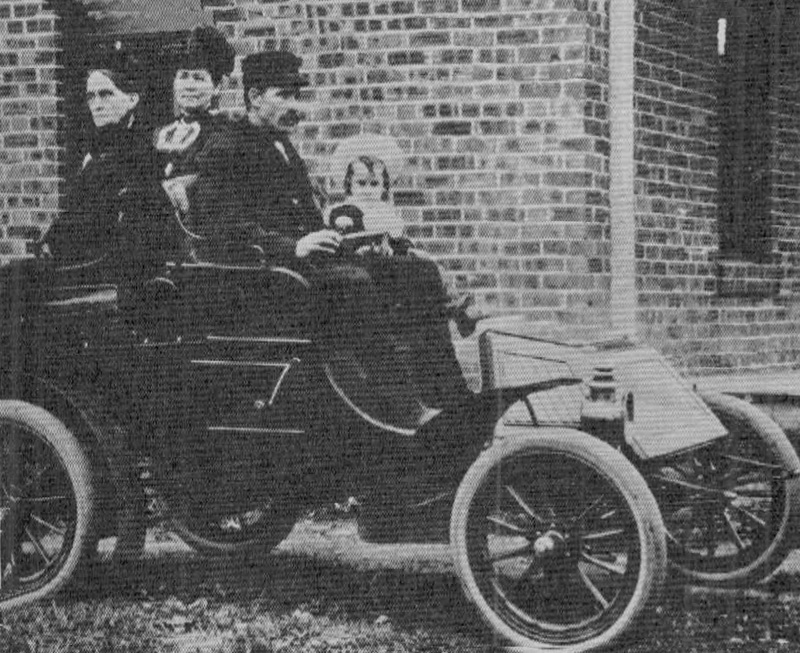
HISTORICAL EVENTS THAT TOOK PLACE ON THIS DAY IN CANADA
5 December

First automobile in Sussex N.B., 1903
"Horseless Carriages" Appear on Canadian Roads
Whenever a discussion arises about who had what first, there is seldom unanimous agreement. Just who did have Canada's first automobile? Perhaps the decision depends on the definition of an automobile. The distinction might belong to Father Belcourt who had a steam-propelled vehicle when he was serving in Prince Edward Island. It was demonstrated at a garden party in 1866 and the Charlottetown Examiner reported, "and with wonder and delight it was observed steaming away for half a mile on the road and back again at a fast speed."
Another "first" automobile was called a "horseless carriage." It was an electric car built for F. B. Fetherstonhaugh, K.C., by Dickson's of Toronto, and appeared on the streets on December 5, 1893. It could travel at a speed of 15 m.p.h. and go 15 miles before its batteries needed recharging.
It seems clear that the first Canadian-owned gasoline car was purchased by Colonel John Moodie of Hamilton, Ontario, on April 2, 1898. It was a "Winton" and looked like a horse-drawn buggy with the engine in the rear. There were spikes around the end of the car to keep people from climbing on board. Colonel Moodie liked to be first in everything. He owned the first bicycle in Canada, a Bayliff-Thomosin high-wheeler in 1878, and the first motorboat which he displayed on Hamilton Bay in 1895.
Cars in British Columbia and the Maritimes were driven on the left-hand side of the road until 1920-1922, as they are in Britain and parts of Europe. Then they fell in line with the other Canadian provinces which always drove on the right. The custom of driving on the left came from olden days when knights traveled the countryside on horseback. They wore their swords on the left, so they rode on the left side of the roads to be in a better position to draw their swords quickly with their right arms.
Driving on the right-hand side of the roads in North America evolved from the days of the covered wagons. The lead man walked to the left of the horses, holding the bridle with his right hand. Right-handers, then, set the traffic pattern of two continents.
OTHER NOTABLE EVENTS ON THIS DAY IN CANADIAN HISTORY
5 December
-1775 The Americans under General Arnold and Montgomery began the siege of Quebec.
-1794 Lieutenant-Governor Simcoe of Upper Canada went from New York to Kingston in an open boat.
-1821 The Hudson's Bay Company grant was renewed for twenty-one years with exclusive trade rights.
-1837 Montreal was placed under martial law.
-1869 The Métis published a list of rights as the Red River uprising developed.
-1909 Marconi sent signals across the Atlantic from Glace Bay, Nova Scotia (see December 12).
-1962 Mrs. Claire Kirkland-Casgrain became the first woman cabinet minister in the Province of Quebec.